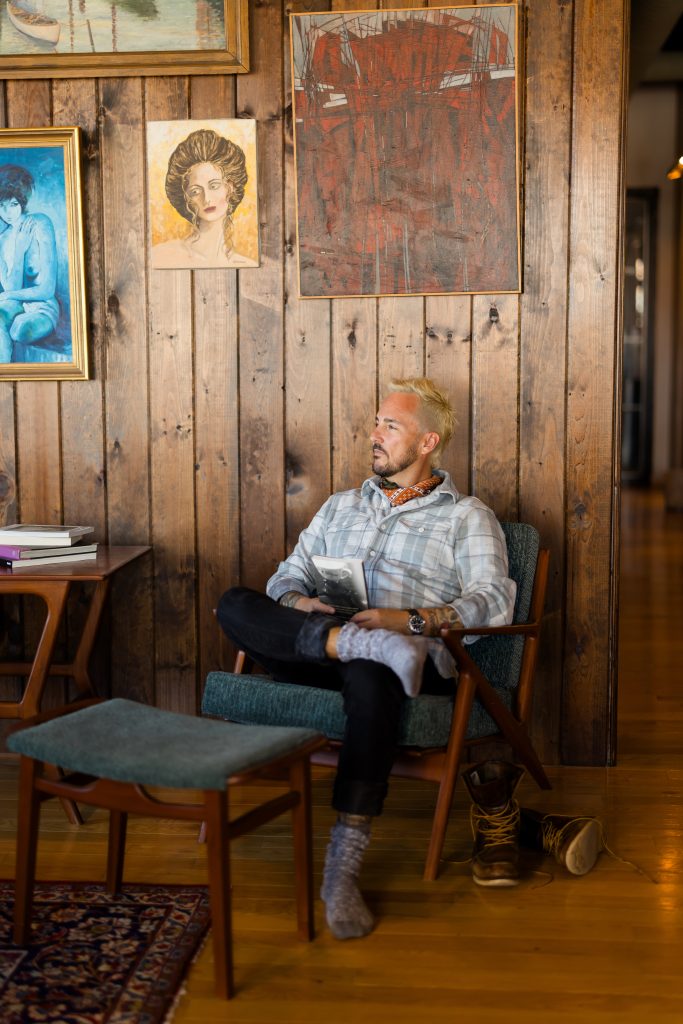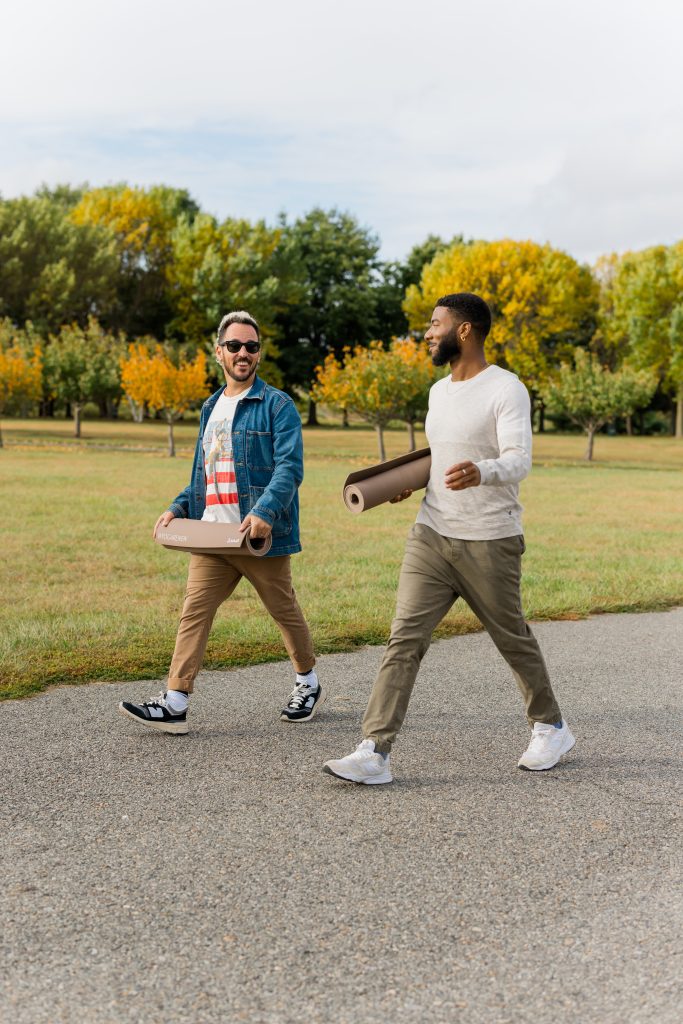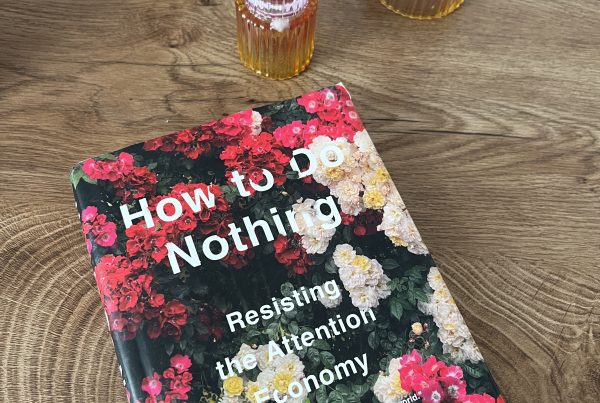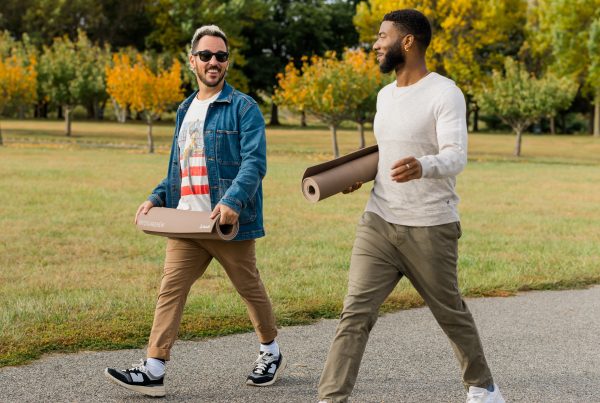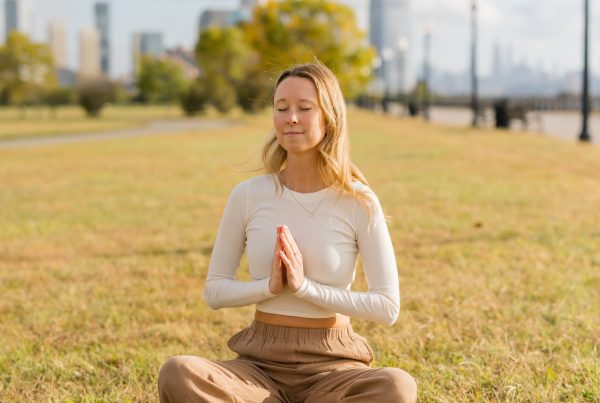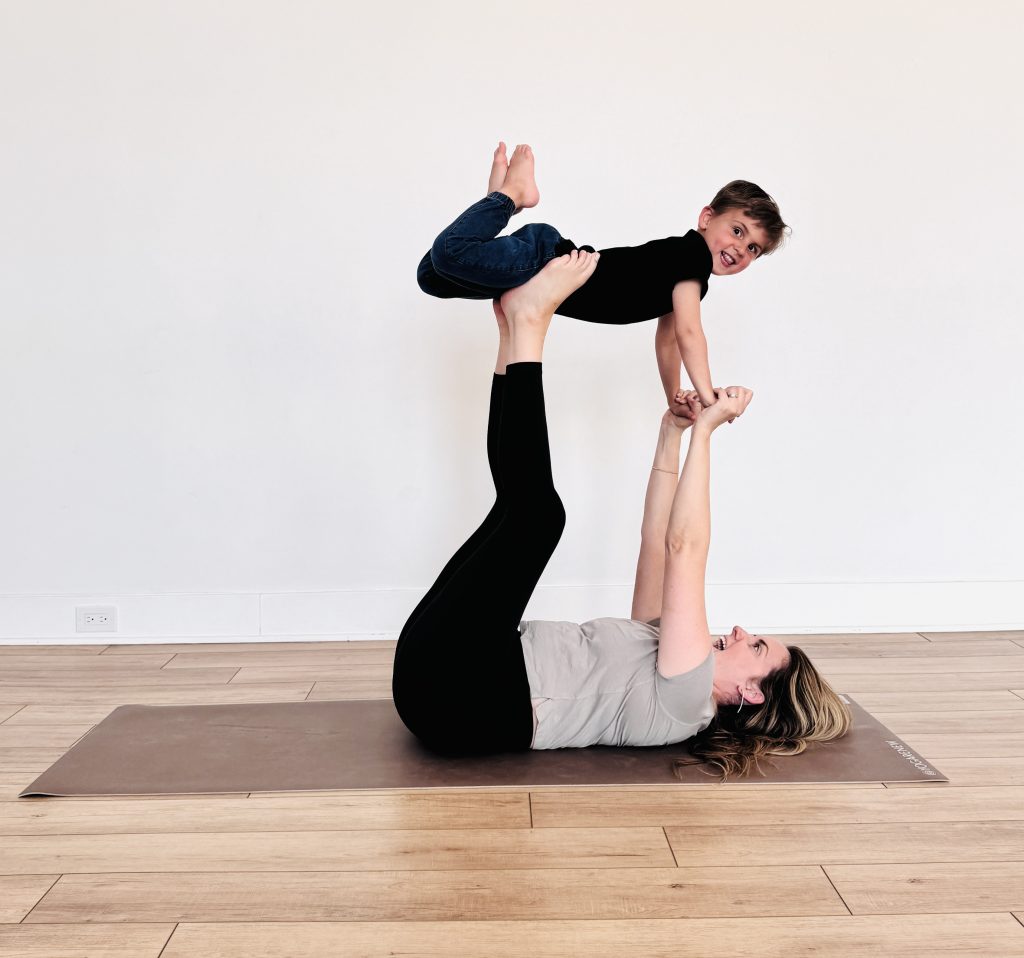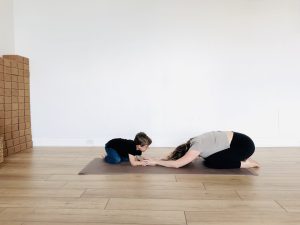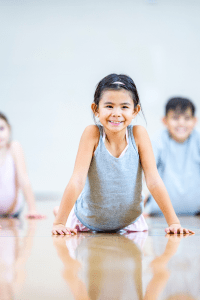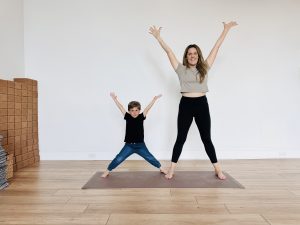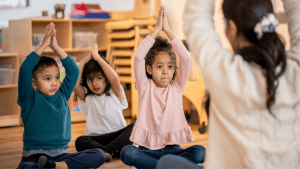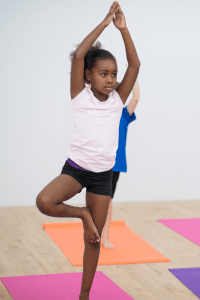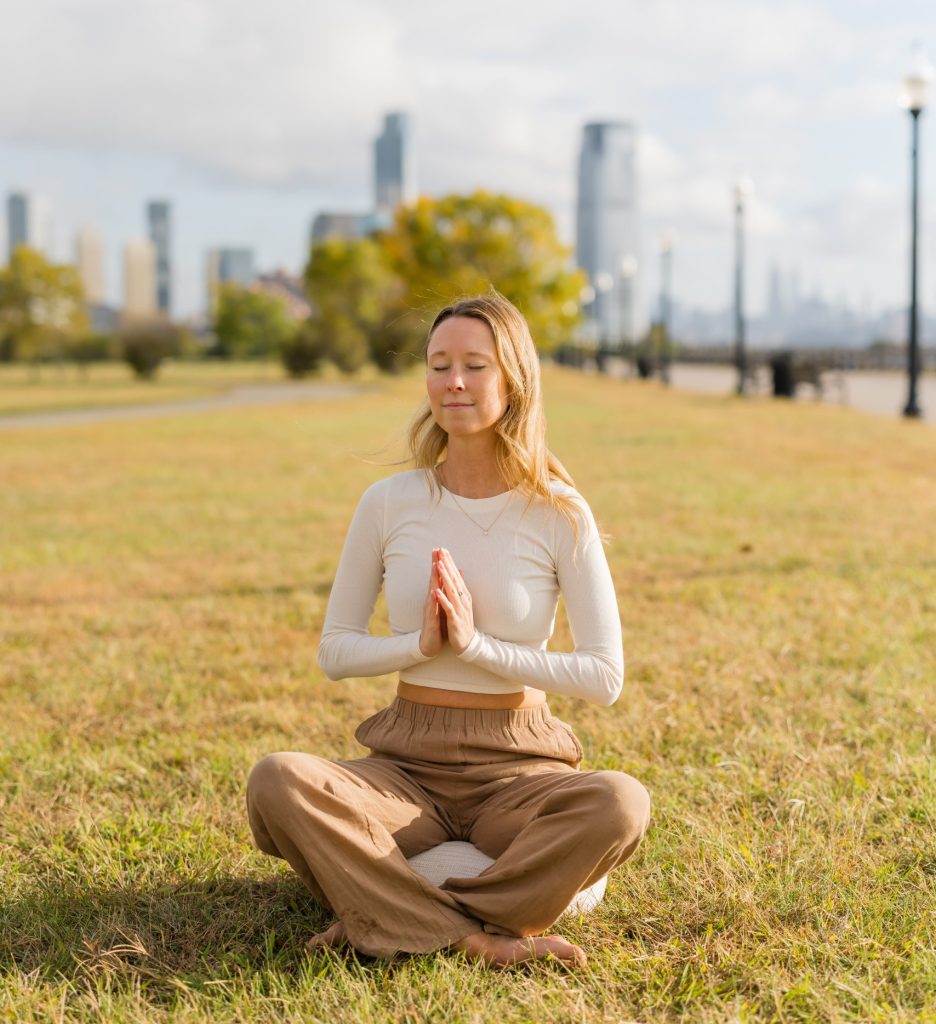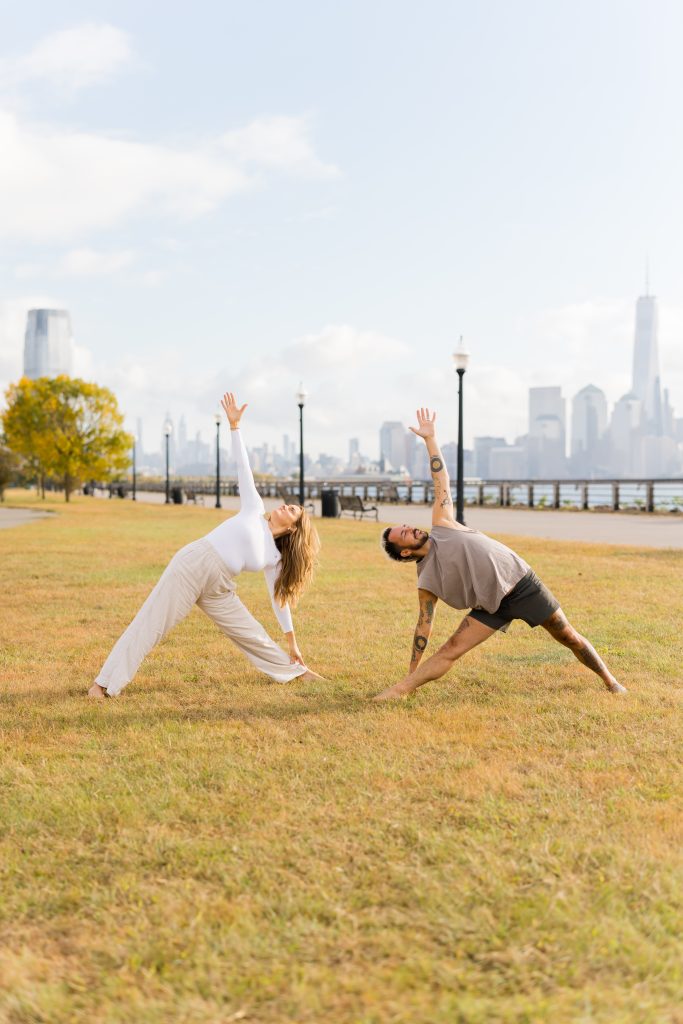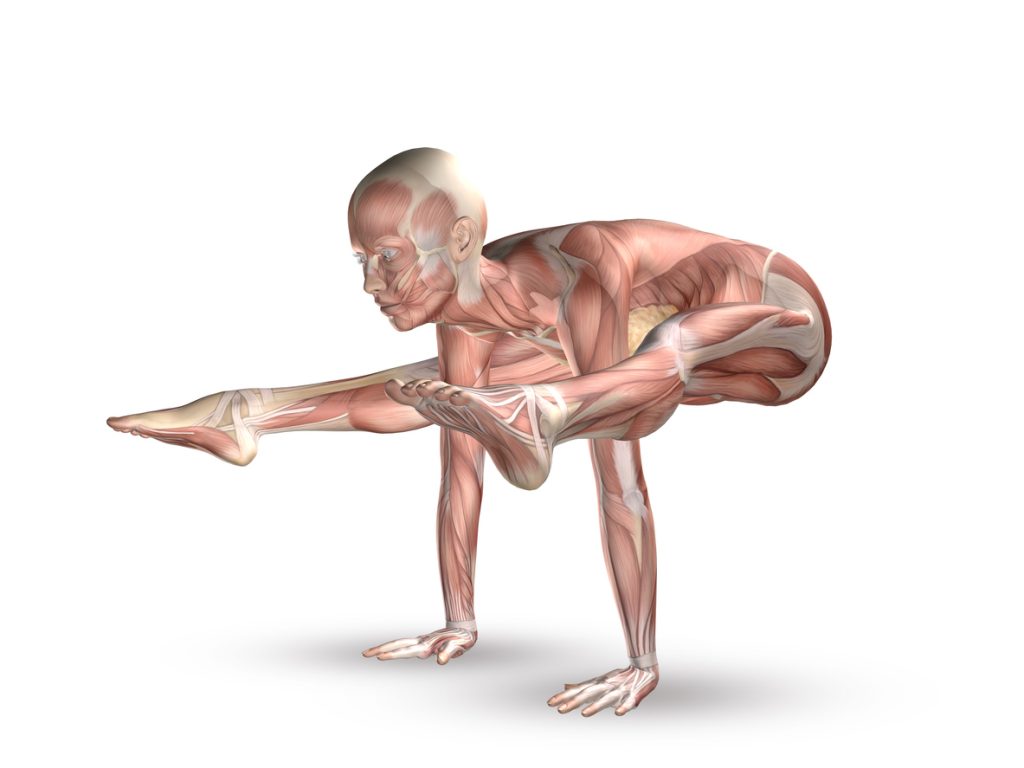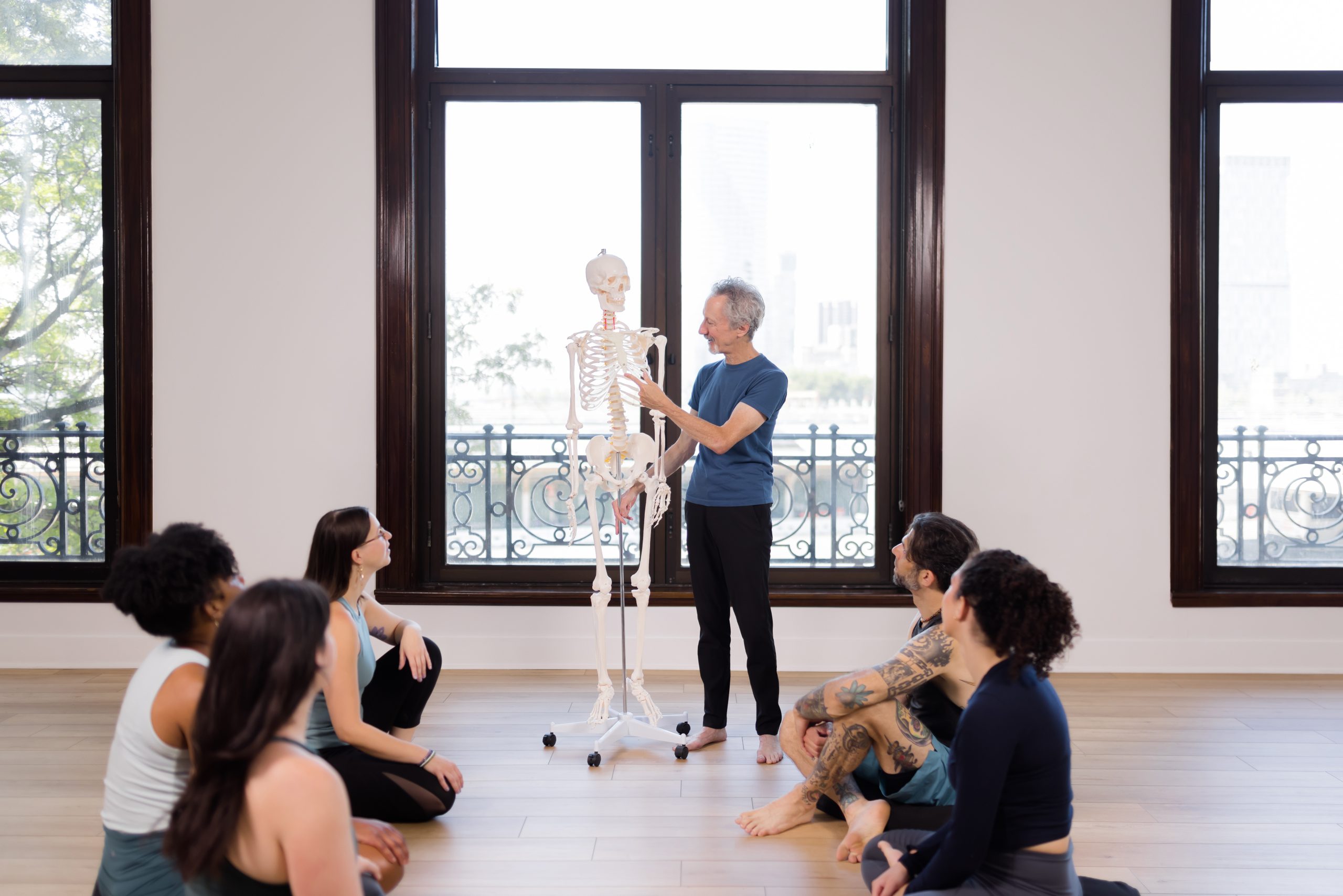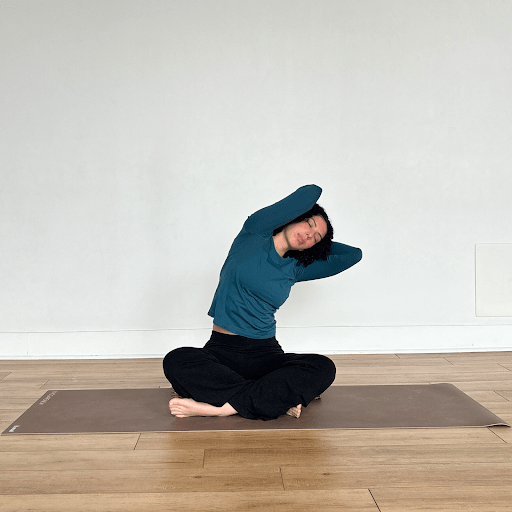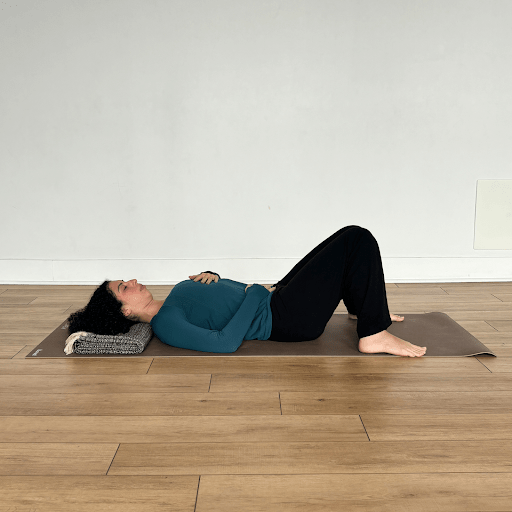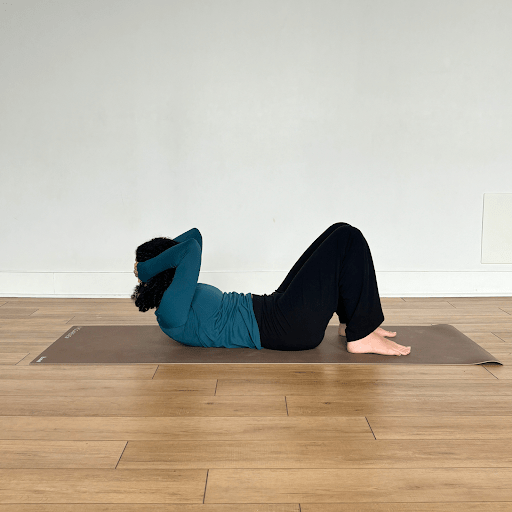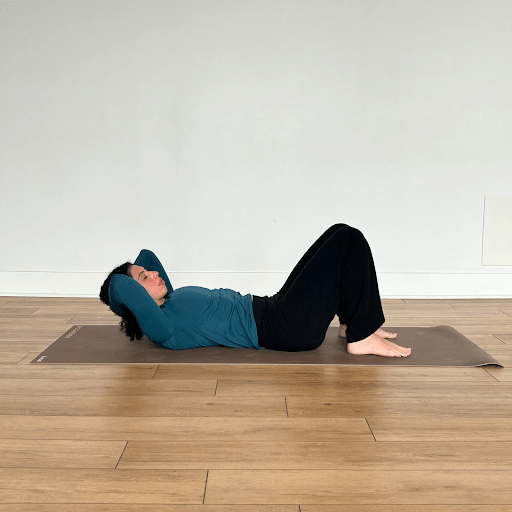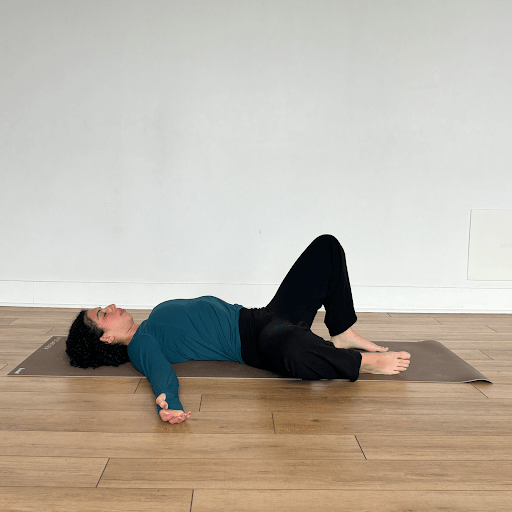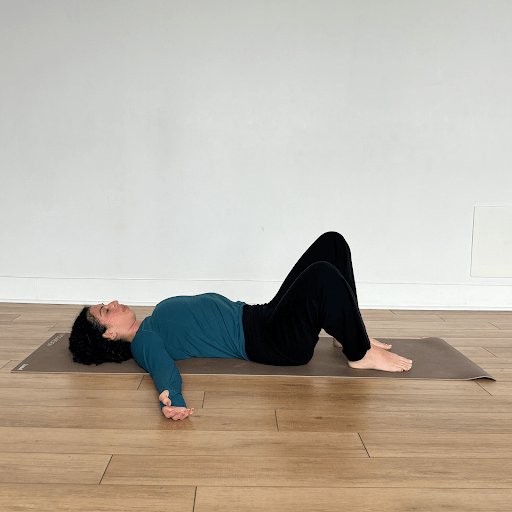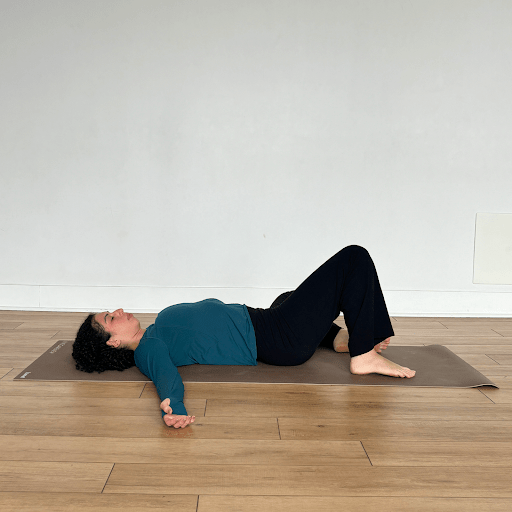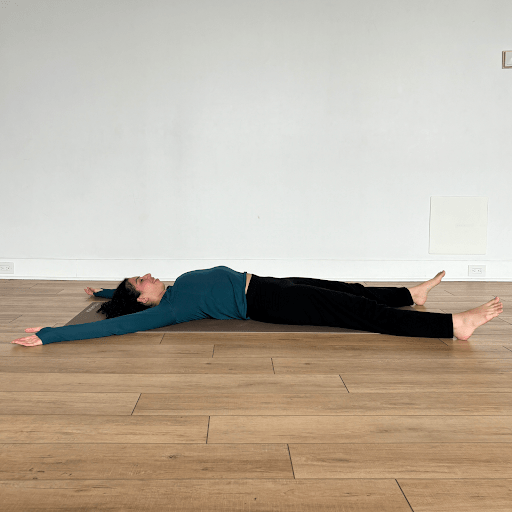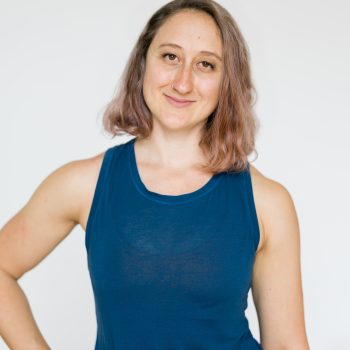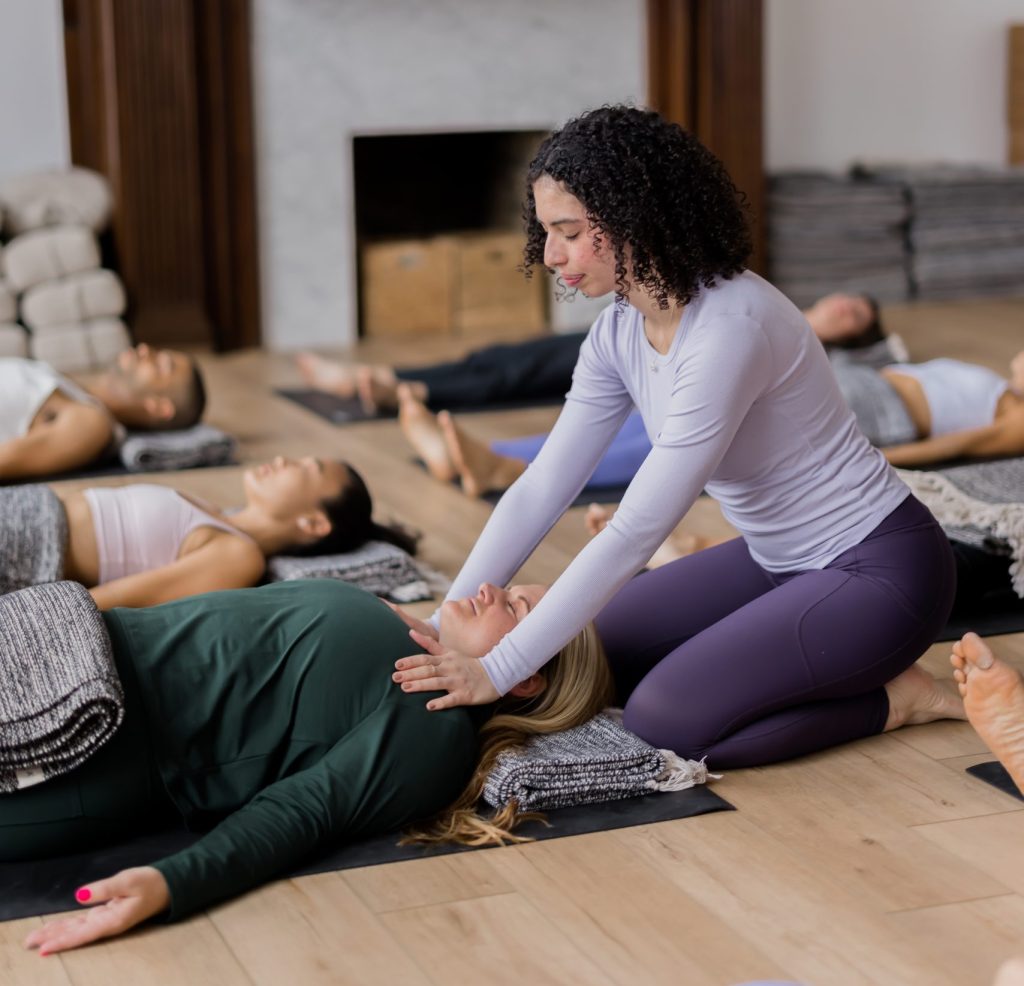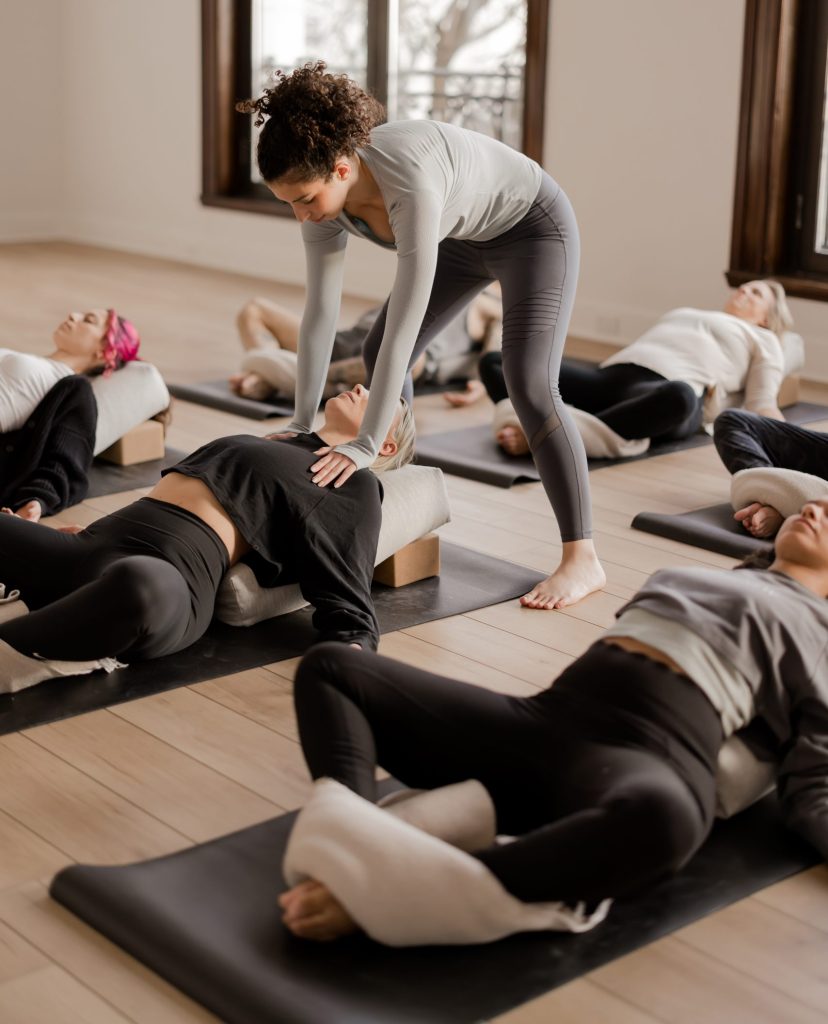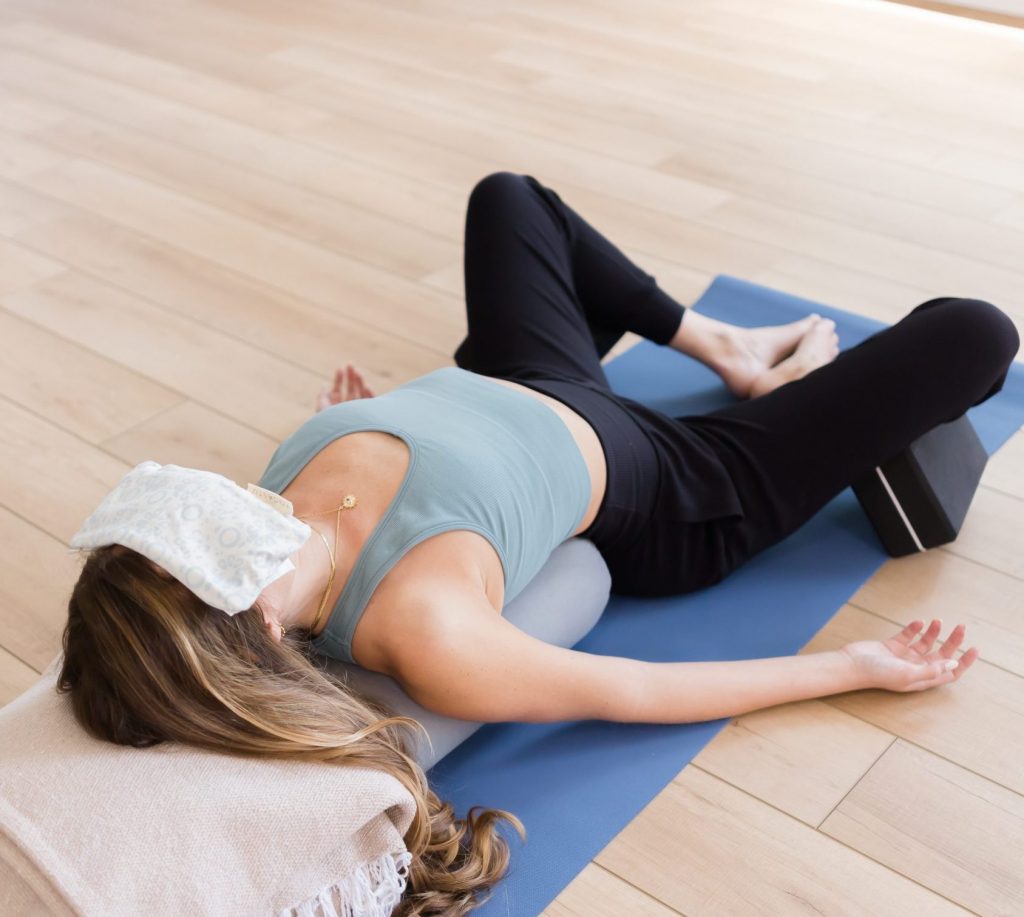Training to become a mindfulness meditation teacher can be a transformative experience, offering a chance to deepen your personal practice while gaining the skills to guide others. By exploring the history, philosophy, science, and practical application of mindfulness meditation, you’ll develop the tools needed to support others on their path to well-being.
A comprehensive mindfulness meditation teacher training will prepare you to inspire and lead, helping to create meaningful change and nurture more mindful communities. In this article, we’ll explore what it means to be a Mindfulness coach and how you can set yourself up for success.
Why Mindfulness Meditation?
Mindfulness meditation has gained significant popularity over the past few decades, largely due to its strong scientific backing in areas such as emotional regulation, stress management, increased focus, and enhanced social connections, among others. As more research highlights its profound benefits, people are increasingly drawn to mindfulness as a powerful tool to enrich their daily lives. By incorporating mindfulness practices, individuals seek to cultivate greater happiness, well-being, and a deeper sense of balance, allowing them to navigate life’s challenges with more clarity and resilience.
What is a Mindfulness Coach?
A Mindfulness coach helps people leverage the benefits of Mindfulness to improve different aspects of their life. The benefits of this practice are vast, so mindfulness coaches can influence many areas of a person’s life including their relationships, contentment, goals, and overall well-being.
Some of the benefits that mindfulness coaches can influence include:
- Resilience to stress and anxiety
- Sharper attention and focus
- Emotional contentment
- Stronger social and professional relationships
- Greater Productivity
- Better self-control
- Mental clarity and situational awareness
- Improved confidence and self-esteem
These benefits can ultimately have a positive impact on a person’s relationships, mental and physical health, and personal or professional goals.
Mindfulness coaches are not medical professionals, although many medical professionals may also be mindfulness coaches. They are not counselors, psychologists or psychiatrists although many people in these professions do pursue a mindfulness certification to incorporate its benefits into their practice. A sizable portion of students in my training program are already established in these professions. Other students of mine are looking to build a separate practice or to incorporate mindfulness into an area like yoga. Beyond that, there are quite a lot of students simply looking to gain more insight into mindfulness for their personal benefit.
How to Become a Mindfulness Coach: 3 Simple Steps
- Completion of a mindfulness certification
- Commitment to a personal formal mindfulness meditation practice
- Commitment to ongoing development as a teacher
Mindfulness coaching does not have a clearly defined path, and practitioners may arrive from quite different journeys. This can create a bit of confusion in terms of how to accomplish your goals of building a practice. Education and experience are key, however there are technically no requirements of a formal education in order for somebody to begin calling themselves a ‘mindfulness coach.’ There is no official ‘mindfulness certification’ or accreditation agency in the space. The practice is derived from techniques that have been used for centuries combined with contemporary research and scientific understanding. So the modern concept of an accredited mindfulness institution hasn’t really come to fruition.
While there aren’t any formal requirements to become a mindfulness coach, clients will likely want to see some level of credentials to establish trust. A good mindfulness certification program will help graduates gain insight on the scientific foundation for mindfulness, its techniques, tools and practices.
Outside of knowledge, its important for mindfulness practitioners to have a personal practice. This will help practitioners embody their personal practice in their coaching and show clients the benefits of practice through example.
Having said that, lets explore the three main components that can help you as mindfulness coach.
1. Completion of a Mindfulness Meditation Teacher Training
A mindfulness meditation teacher training is a program designed to equip individuals with the knowledge, skills, and practical experience needed to teach mindfulness meditation to others. These trainings typically include an in-depth exploration of mindfulness practices, covering the following areas:
- Mindfulness Techniques: Learning various mindfulness meditation methods, including breath awareness, body scanning, loving-kindness, and other forms of mindfulness exercises.
- Theoretical Foundations: Understanding the history and philosophy behind mindfulness, rooted in Buddhist traditions, as well as contemporary secular approaches.
- Scientific Research: Gaining insight into the growing body of research on the benefits of mindfulness for mental, emotional, and physical well-being.
- Practical Application: Developing skills to guide others in mindfulness, including how to lead group meditations and create a safe space for participants.
- Self-Practice: Emphasizing personal mindfulness practice as the foundation for teaching, ensuring that trainees embody mindfulness before instructing others.
Through this training, individuals not only enhance their own mindfulness practice but also gain the confidence to teach others. Mindfulness Based Stress Reduction (MBSR) is one of the popular training programs for mindfulness practitioners. In my personal mindfulness coach certification, I’ve expanded on the tools in MBSR to developer a broader scope of tools and resources for practitioners. Wherever you choose to study, there are some important considerations that can be helpful in your decision-making process.
How to Choose a Mindfulness Meditation Teacher Training Program
- Program Format: Consider whether you prefer an in-person or online program based on your lifestyle and schedule. Decide on the training format that fits your needs, whether it’s a short retreat or a longer-term program. If the latter, determine how frequently you’ll meet and for how long. For online programs, assess not only the time commitment but also whether you prefer live sessions for real-time engagement or pre-recorded content that allows you to work at your own pace.
- Goals: Clarify your personal goals and what you hope to achieve from the program. Look for a course that aligns with these goals and provides the specific tools and knowledge you need to grow as a mindfulness practitioner and teacher.
- Budget: Be mindful of your budget, and carefully check for any additional fees that might not be included in the listed price. Keep an eye out for seasonal promotions or discounts to find a program that fits within your financial limits without compromising on quality.
- Credibility: Choose a program from a reputable school with strong ratings and testimonials from past students. Additionally, ensure that the instructors are highly qualified and have the credentials to support their teachings.
- Real-time Interaction: If you’re opting for an online pre- recorded program but value interaction with teachers and fellow participants, select a school that offers live, weekly sessions to foster a sense of community and allow for real-time engagement.
- Lifetime Access: For online training, it’s beneficial to choose a program that provides lifetime access to its resources and materials, so you can revisit and deepen your learning at any time.
- Support: Before enrolling, test the program’s support system. A simple way to do this is by sending an inquiry email and noting how quickly and effectively they respond. This will give you insight into the level of support you can expect throughout the course.
2. Commitment to a Personal Formal Mindfulness Meditation Practice
The teacher should have a clear understanding of the attitudes of mindfulness like patience, non striving and acceptance, and a clear understanding of how the mind works. And you will not get these insights through taking courses nor reading books. An in-depth understanding of mindfulness can only be experienced through the consistent practice of mindfulness meditation. There is no short-cut to learning mindfulness skills.
It is important to have your own personal practice as this will provide an anchor for you when sessions are challenging. When you are aware of your own feelings of anxiety or inadequacy, you can choose to remain present with the needs of the client, instead of being caught up in your own stories or emotions.
A mindfulness practice not only benefits you but also positively impacts your clients. When they witness mindfulness embodied in their teacher, they learn by example. Observing how you handle difficult emotions with kindness, compassion, and curiosity may offer them a new perspective on managing their own stress and challenges.
3. Commitment to Ongoing Development as a Teacher
A commitment to ongoing development as a mindfulness teacher is essential because the journey of learning and teaching mindfulness doesn’t end with completing a teacher training program. While foundational training provides the core principles and techniques, mindfulness is a constantly evolving field. Continued education through advanced courses, workshops, and retreats allows teachers to deepen their understanding, refine their skills, and stay updated with new research and methodologies. This ongoing growth ensures that teachers can offer the most current, relevant, and effective practices to their students.
Moreover, personal development and self-practice are central to embodying the qualities of a mindfulness teacher—compassion, patience, and presence. Engaging in lifelong learning keeps teachers grounded in their own mindfulness practice, helping them to stay authentic and prevent burnout. Regular exposure to different teaching styles and perspectives also fosters adaptability, enabling teachers to meet the diverse needs of their students. Ultimately, continuous learning empowers mindfulness teachers to grow both personally and professionally, enhancing their ability to guide others on their path to greater well-being.
Advantages of YogaRenew’s Mindfulness Meditation Certification
YogaRenew is a renowned school and a beacon for a wide range of teacher training programs, continuing education courses, workshops, and more. Here are just some of the benefits:
- Internationally recognized
- No enrollment dates, take the course at your own pace and on your schedule
- Lifetime access to your student portal and course materials
- No application fees
- 30 days full refund guarantee, no questions asked
- Weekly, live sessions on Zoom for those who wish to interact with the teacher, meditate in group setting and connect with the community
- A specialized Mindful Eating Teacher Training Program designed for individuals who wish to specialize in the practice of mindful eating
Incorporating Mindfulness in your Business
Whether you are a therapist, a coach or a yoga teacher, or work in any health-related career, you can incorporate the skills of mindfulness in your practice for working with clients to support them in their journey and to create sustainable changes in their physical, mental, and emotional health.
For leaders and business owners, promoting mindfulness also fosters a positive company culture where employees feel valued and supported. Offering mindfulness programs, workshops, or even brief mindfulness breaks during the day can contribute to higher job satisfaction and lower burnout rates.
The general structure for a mindfulness session:
Structuring a mindfulness coaching session involves creating a safe, supportive environment where clients feel comfortable exploring their thoughts, emotions and choices.
Here’s a sample for structuring a group mindfulness session. The format can be adjusted based on the intention of the session, length of the session, if it is one-on one and based on the client’s specific needs, while maintaining a compassionate and flexible approach throughout.
Opening
- Welcome — Invite participants to introduce themselves and share their intention from attending the session.
- Introduction — Explain briefly what mindfulness is and what it isn’t, highlight some common misconceptions about the practice, and demonstrate posture options.
- Explain the Practice — Explain the intention and benefits of the practice session, and what to expect during the session.
- Trauma-Informed Considerations — Encourage clients to engage only to the extent they feel safe. Remind them they can opt out anytime they need to, ensuring a sense of control throughout the practice.
- Grounding Practice — Start with a grounding exercise, such as deep breathing and awareness of body. This helps bring participants into the present moment and relaxes them before diving into deeper work.
Main Practice
Guided mindfulness meditation practice based on the intention and goals of the session, and can include:
- Awareness of Breath — Focusing on the breath to cultivate awareness and focus.
- Body Scan — Guiding the attention to different body parts to enhance body awareness and cultivate more tolerance towards unpleasant sensations.
- Mindfulness of Emotions — Identifying and naming emotions without judgment.
- Loving-Kindness (Metta) Meditation — Cultivating compassion for self and others.
- Reflection & Discussion — Invite participants to ask questions, share any observations, emotions, or insights from the practice.
Integration & Next Steps
- Daily Life Application — Suggest ways participants can bring mindfulness into their everyday routine. This could be through mindful eating, mindful walking, or even setting reminders for a few mindful breaths during the day.
- Set a Personal Practice Goal — Help participants set a realistic goal for their mindfulness practice. You can also suggest readings and resources that can help participants in their practice.
Closing
End the session with gratitude and acknowledgment of participants’ effort.
Finding clients for a mindfulness coaching business
Finding clients requires a mix of authenticity, trust-building, and strategic outreach. Here are some steps to help attract and engage clients who will benefit from your services:
- Define Your Niche and Ideal Client — Be specific about who you help (e.g., corporate professionals dealing with stress, individuals looking to cultivate balance in their lives, or those interested in mindful eating).
- Clarify the Benefits — Clearly outline what clients will gain from your coaching, like reduced stress, improved emotional regulation..etc. This helps potential clients understand the value of mindfulness in a practical way.
- Leverage Social Media Mindfully — Share valuable content that resonates with your ideal clients, such as mindfulness tips, guided meditation snippets, and personal reflections. Authenticity and vulnerability are powerful in this space.
- Host Live Sessions or Q&As — Consider hosting live mindfulness sessions or Q&A sessions on platforms like Instagram or LinkedIn to engage potential clients in real time.
- Build a Professional Website — Create a resourceful homepage: Highlight who you are, the unique benefits of mindfulness coaching, and the services you offer. Include a clear call-to-action (CTA) for people to book a consultation or download a resource. Blog About Relevant Topics: Write articles on topics your clients care about, like “Mindfulness for Managing Workplace Stress” or “Mindful Techniques for Better Sleep.” This improves SEO and positions you as a knowledgeable resource. Offer Free Resources: Consider adding resources like a free downloadable guided meditation, mindfulness worksheet, or email series on incorporating mindfulness into daily life. This gives potential clients a taste of what you offer and can bring them to your services.
Network with Local Wellness Businesses and Organizations
- Collaborate with Wellness Centers: Reach out to yoga studios, fitness centers, and wellness clinics. Offer to teach an introductory mindfulness class or partner on a workshop, allowing you to connect with a new audience.
- Offer Corporate Wellness Programs: Many companies are open to stress management programs for their employees. Contact local businesses to propose a mindfulness workshop or series as part of their wellness initiatives.
- Attend Wellness Events and Conferences: Participate in local events related to health and wellness, whether as a speaker, exhibitor, or attendee. Networking in person can be a powerful way to gain clients.
Host Free or Low-Cost Workshops
- Offer Introductory Sessions: Host free or low-cost introductory mindfulness workshops, either online or in person, to introduce people to your approach. Provide a short, impactful experience and share information about how to work with you afterward.
- Follow Up with Participants: After a workshop, send a thank-you email with an invitation for a one-on-one consultation or a special offer for first-time clients. This gentle follow-up encourages engagement without being too pushy.
- Offer a Free Initial Consultation: Many potential clients need to feel a personal connection before committing. Offering a free initial consultation allows them to experience your coaching style and see how mindfulness can help them.
Build Trust Through Testimonials and Case Studies
- Gather Testimonials: Ask past clients for testimonials that highlight specific outcomes, like feeling calmer or more present. This social proof builds credibility and helps future clients envision the benefits.
- Share Success Stories in Your Content: Without breaching confidentiality, share case studies or general examples of client progress. It’s powerful to show the transformative potential of mindfulness coaching in real-life scenarios.
- Foster Word-of-Mouth Referrals: Once you have clients who are satisfied with their progress, kindly ask if they would refer others to you. Consider offering a small discount or thank-you gift for successful referrals.
- Create a Client Referral Program: For existing clients, offer incentives for referrals, like a free session or a small gift, to encourage them to spread the word. These strategies, implemented with consistency, patience, and authenticity, will help attract clients who resonate with your approach to mindfulness coaching and are eager to benefit from it.
Structuring Compensation for Mindfulness Coaching
This involves balancing the value of your services with the accessibility for clients, your own financial goals, and market standards. Here are some key approaches to consider when setting up compensation plans for your mindfulness coaching:
Hourly Rate or Session Fee
- Determine an Hourly Rate: Research the going rate for mindfulness coaches in your area or niche. Rates can vary widely depending on factors like experience, location, and specialization. Typical rates range from $50 to $200 per hour but may be higher for corporate coaching or specialized trauma-informed sessions.
- Session Length Options: Standard sessions are often 50–60 minutes, but you might offer shorter (e.g., 30 minutes) or longer (e.g., 90 minutes) sessions. Consider setting different rates for each length to give clients flexibility based on their needs and budget.
- Consider Package Discounts: To encourage commitment, offer discounted rates for clients who book a set number of sessions upfront (e.g., 5, 10, or 12-session packages).
Sliding Scale or Income-Based Rates
- Offer Sliding Scale Rates: For accessibility, especially for clients with limited financial means, offer a sliding scale option. For example, clients could choose a rate within a set range (e.g., $75 to $150 per session) based on their financial situation. This approach is often appreciated and attracts clients committed to working with you long-term.
- Income-Based Tier System: Some coaches use a tiered system where clients are charged based on income brackets. This can be helpful if you work with a range of clients, from students to corporate executives.
Corporate and Group Rates
- Corporate Coaching Fees: Businesses typically have higher budgets for wellness programs, so rates for corporate mindfulness coaching can be significantly higher than individual sessions. Consider setting an hourly or daily rate for corporate workshops, which can range from $200 to $1,000 per hour, depending on the industry and company size.
- Group Coaching Sessions: Group sessions are often more affordable for individual clients, which can make mindfulness coaching accessible to a wider audience. You could charge each participant a lower rate than an individual session (e.g., $20–$50 per person per session) while still earning a substantial total.
When structuring your compensation, it’s essential to find a balance between valuing your time and expertise and making your services accessible to the clients you aim to serve. Regularly review your pricing strategy to ensure it aligns with both your professional goals and your clients’ needs.
Enroll in one of our online courses today!
Becoming a mindfulness coach is more than a career choice; it’s a commitment to fostering a more compassionate, resilient, and peaceful world. In a society often driven by stress and division, the role of a mindfulness coach is essential. By guiding others, we’re nurturing communities that value empathy, self-awareness, and understanding. The world needs more mindful individuals to drive this transformation—so if you feel called to this path, know that your efforts contribute not only to individual growth but also to a more harmonious world for all.
